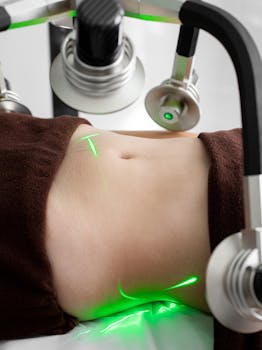Experiencing an unsuccessful ptosis surgery can be a challenging and frustrating situation for patients who were seeking improved eyelid function and appearance. Ptosis surgery, aimed at correcting drooping eyelids, is typically successful, but complications can occur, leading to less than satisfactory outcomes. Understanding the various factors that can lead to ptosis surgery failure, as well as potential next steps and solutions, can help individuals navigate this complex scenario more effectively.
Understanding Unsuccessful Ptosis Surgery
The primary goal of ptosis surgery is to elevate the upper eyelid to allow for better vision and an enhanced aesthetic appearance. However, an unsuccessful ptosis surgery may result in uneven eyelids, over-correction, under-correction, or even no significant improvement at all. Various factors can contribute to these outcomes, ranging from surgical technique to patient-specific anatomical variations.
Causes of Ptosis Surgery Failure
There are several reasons why ptosis surgery might not yield the desired results. These include:
- Poor surgical planning or execution, where the initial condition of the eyelid is not fully assessed.
- Scarring or healing complications that affect the eyelid’s function.
- Inherent muscle weakness that surgery does not adequately address.
- Incorrect positioning or tension of the eyelid post-surgery.
Understanding these causes can provide insight into why the surgery may not have been successful and guide future corrective actions.
Pros and Cons of Ptosis Surgery
Like any surgical procedure, ptosis surgery comes with its own set of advantages and potential drawbacks. Here are some key considerations:
- Pros: Successful surgery can enhance vision, improve eye appearance, and boost self-esteem.
- Cons: Risks include infection, asymmetry, and recurrence of ptosis.
It’s important to have realistic expectations and a thorough discussion with a qualified ophthalmic plastic surgeon before proceeding with the procedure.
Steps to Take After Unsuccessful Surgery
If you’ve experienced an unsuccessful ptosis surgery, it is crucial to consult with your surgeon for a comprehensive evaluation. They can assess whether the healing process is progressing as expected or if revision surgery might be needed. In some cases, seeking a second opinion from an experienced oculoplastic surgeon may also be beneficial.
Revisions and Alternative Treatments
For cases where revision surgery is warranted, surgeons may opt for different techniques to achieve better outcomes. This could involve altering the muscle involved in eyelid elevation, such as the levator muscle, or using additional support structures.
In addition to surgical revisions, non-surgical options, like physical therapy for muscle strengthening or the use of external eyelid devices, may provide supplemental support and improvement. These methods are used based on the individual needs and conditions of the patient.
Prevention and Care
To minimize the likelihood of a subsequent unsuccessful ptosis surgery, patients should adhere to pre- and post-operative care instructions thoroughly. This includes maintaining regular follow-ups with the attending surgeon and adopting a cautious approach to any potential factors that might compromise the surgical results.
Further, considering components of holistic care, such as sustainable skincare practices, can support healing and overall skin health.
The Future of Ptosis Treatment
Advancements in medical techniques and surgical technologies continue to enhance the effectiveness and safety of ptosis treatments. Researchers are exploring innovative approaches that could reduce the risk of surgery failure and improve overall patient outcomes. Staying informed about these developments and consulting knowledgeable healthcare professionals remain key for those considering or recovering from ptosis surgery.
Final Thoughts on Unsuccessful Ptosis Surgery
An unsuccessful ptosis surgery does not have to define the outcome of your treatment journey. Through various corrective measures, patients can often achieve satisfactory results. Continuous advancements in medical practice provide new avenues for addressing surgical failures, and maintaining an open dialogue with healthcare providers will ensure tailored, effective solutions for each individual case.
- Successful ptosis surgery relies heavily on precise surgical execution and appropriate healing.
- Understanding the potential reasons for surgery failure can guide corrective procedures.
- Exploring both surgical and non-surgical options may offer viable solutions.
- Consultation with experienced professionals is crucial for making informed decisions.
- Ongoing research holds promise for future improvements in ptosis treatment outcomes.
FAQ
What are common complications after ptosis surgery?
Complications can include asymmetry, infection, scarring, and eyelid position issues. Regular follow-up and proper care can reduce these risks.
How can unsuccessful ptosis surgery be corrected?
Revisions can be made through additional surgery, often involving different techniques to address past issues. Non-surgical methods may also assist.
What factors contribute to ptosis surgery failure?
Poor surgical planning or execution, muscle weakness, and improper eyelid positioning are common factors.
How can I prepare for ptosis surgery?
Preparation includes selecting a qualified surgeon, understanding risks, and closely following pre-operative instructions.
Are there non-surgical options for ptosis treatment?
Yes, options include physical therapy for muscle strengthening and external eyelid support devices, depending on the individual’s needs.
For more information on ptosis and related topics, visit this informational page.






